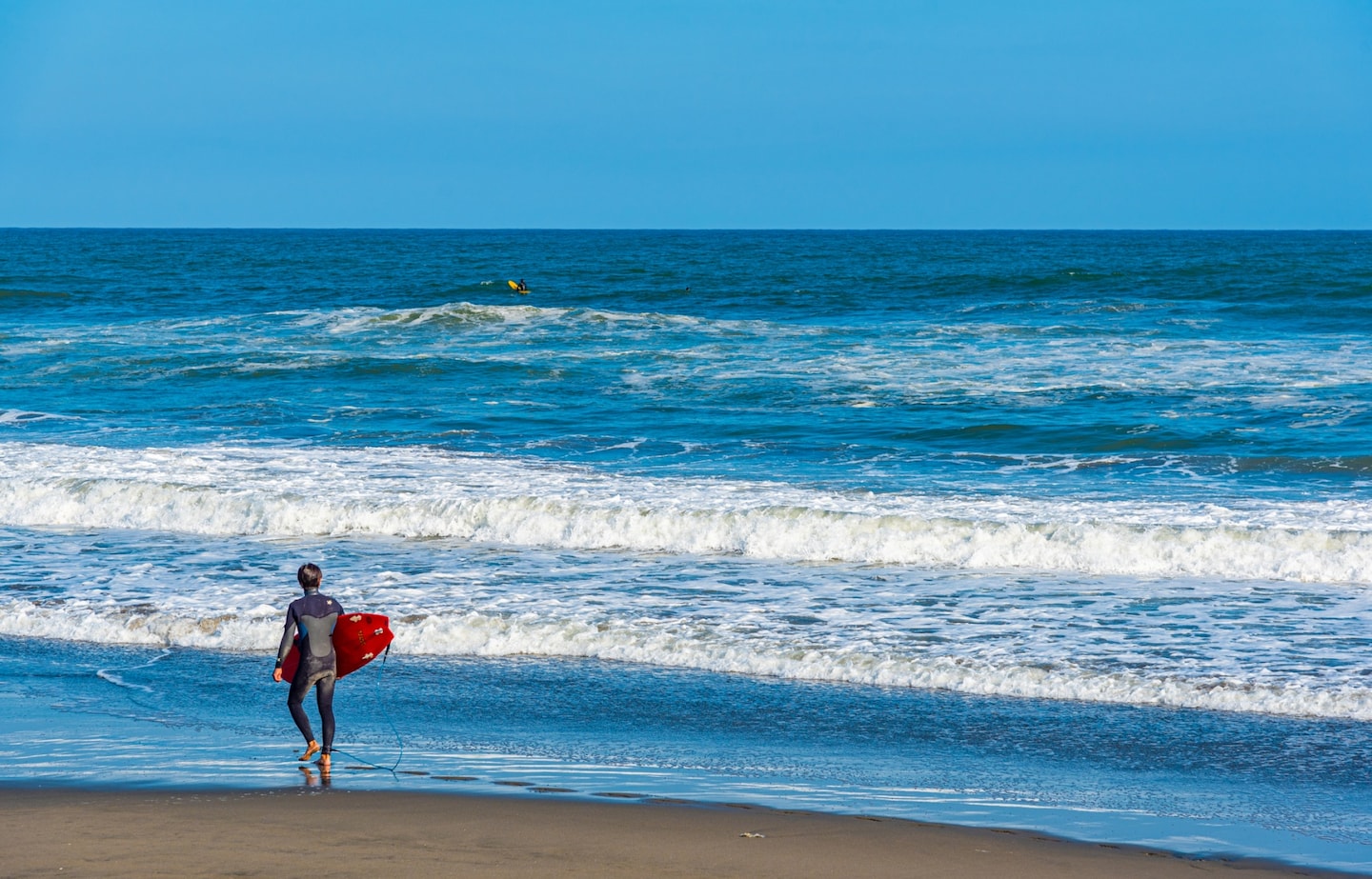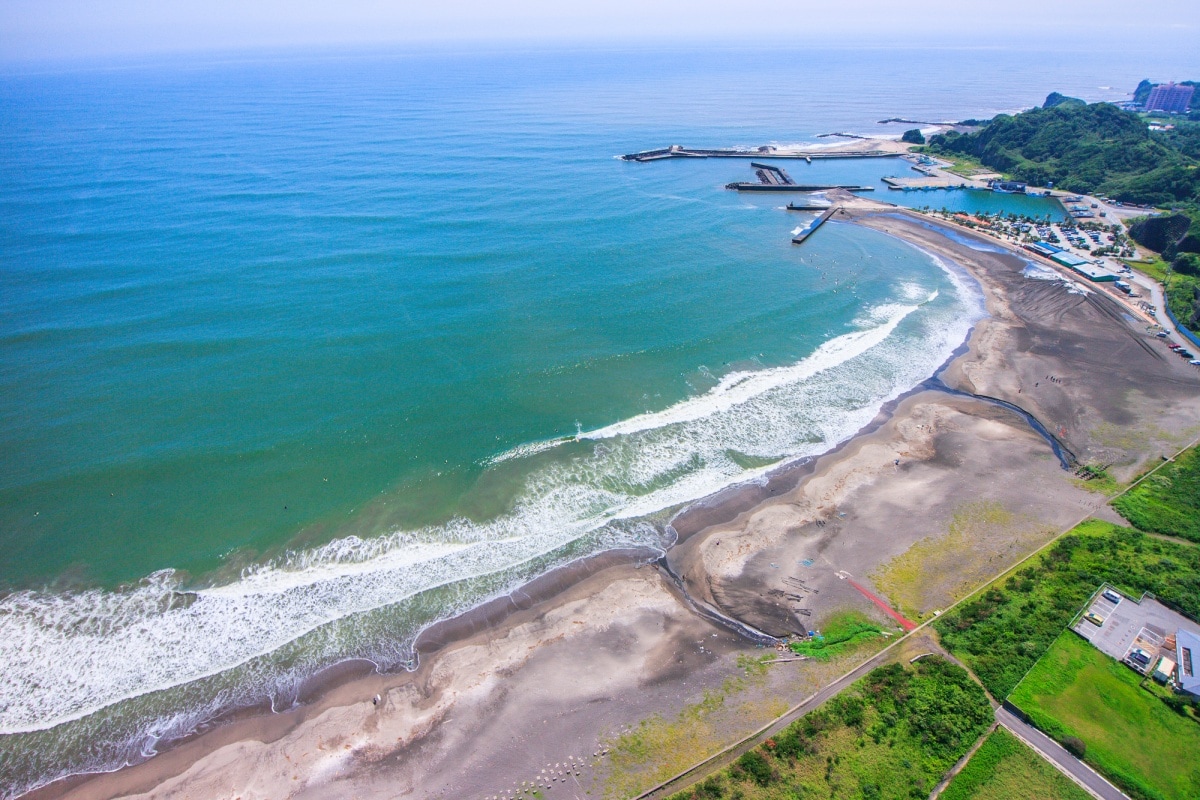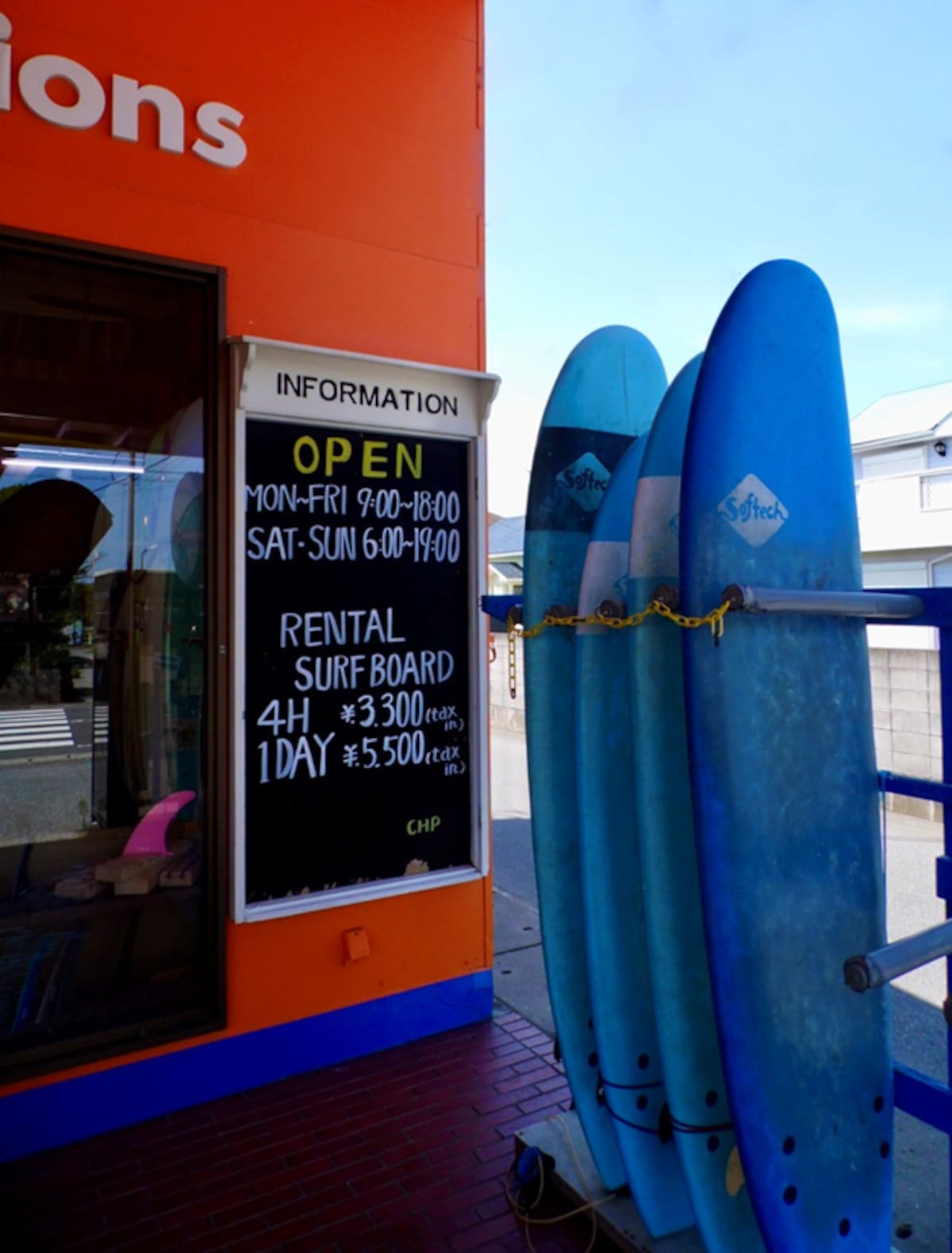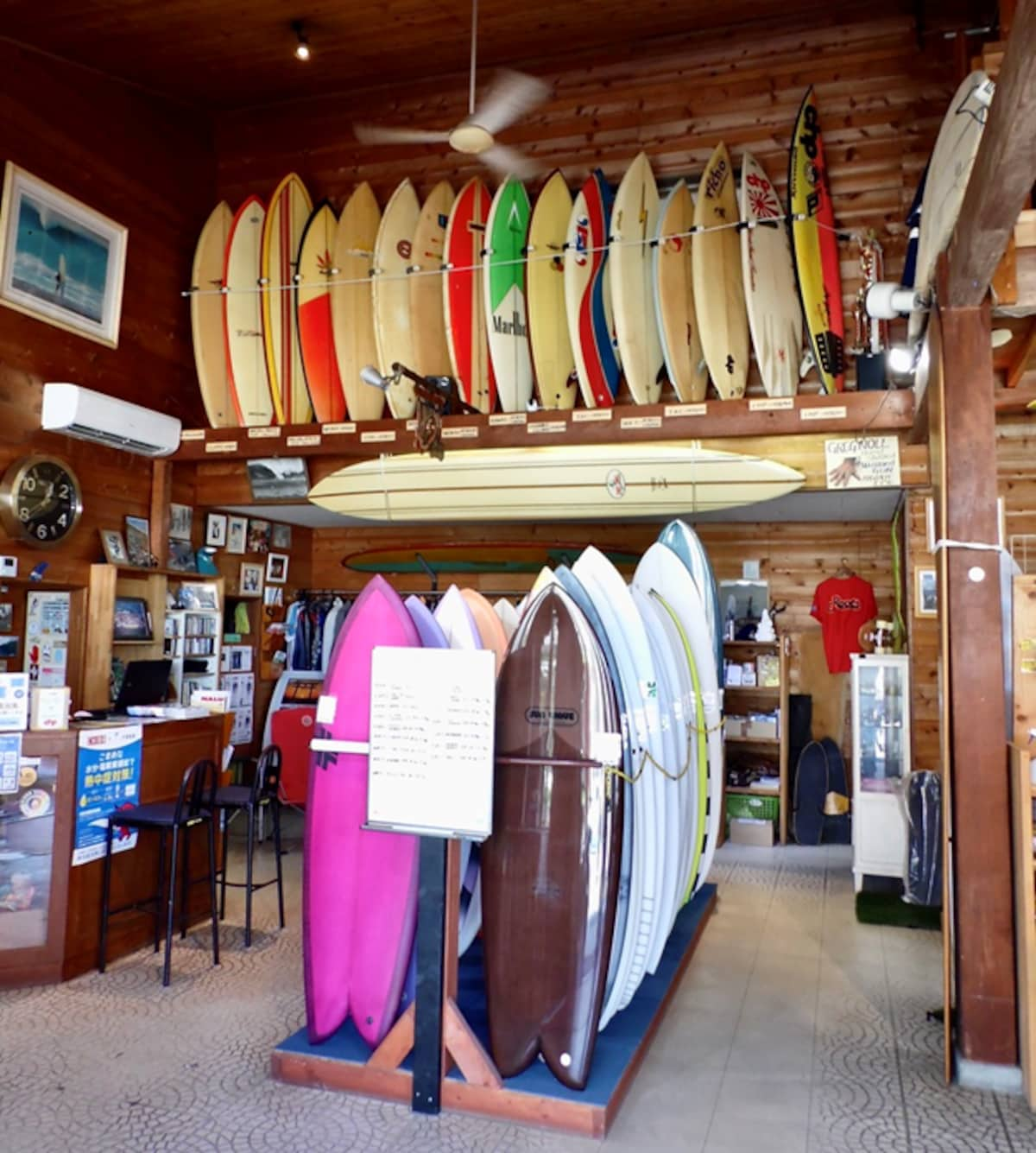“Chibafornia” : Japan’s hottest surfing coast

When surfing comes to mind, most people likely think of Hawaii, California or Australia, the places that give wave-riding its hang-loose vibe. But if the Tokyo 2020 Olympics achieved anything, it may have been spreading global awareness that surfing is now as Japanese as sumo.
By John R. Harris
With about 2,500 kilometers of coast facing deep ocean and thousands of kilometers of “fetch” (the distance waves travel to shore), Japan’s got the geography of a surfing paradise. You can find decent breaks from one end of the archipelago to the other, but apart from the occasional tsunami, it’s rare to find the kind of massive rollers Hawaii or Portugal are famed for. Instead, the best spots offer consistent mid-sized, long-wave swells.
Since most major cities are within a couple of hours’ drive from a break, almost anyone can surf if they want to–and an estimated two million Japanese do. Reliable surfing statistics are hard to come by, but that’s roughly as many surfers as the U.S. or Australia.
So, if you’re visiting Japan, how and where can you ride the waves?
The Shonan beaches, south of Tokyo, are Japan’s most popular venue–but as “popular” means “crowded,” it’s probably best to forget popularity and consider where the Olympic surfing was held, and why. That would be Ichinomiya, on the Pacific coast of Chiba Prefecture, about an hour by train due east of Tokyo. Ichinomiya is the center point of a 100-kilometer surf coast along the Boso Peninsula that stretches from Kamogawa in the south to Choshi in the northeast.
This is the place to be, says Canadian expat Mike Buttrick, who’s been surfing this coast for 25 years, and lives on a hill overlooking the Olympic venue. “If you’re visiting Japan and you want to surf in any season, this is the place,” Buttrick says. “It’s accessible, affordable, and not overly crowded (at least on weekdays). Also, the locals aren’t into protecting their turf, and the waves are pretty consistent.”

Surfoards for rent on the surf strip of Ichinomiya.
Where “Surfonomics” Prevails
A deluxe “Limited Express” train will get you from Tokyo to JR Kazusa-Ichinomiya Station in exactly one hour. From there, it’s just 2 kilometers to the north end of a 5-kilometer strip of coastal surf shops, cafes, and hostelries. With almost every business paying homage to California and Hawaii, there are so many signs in English and Hawaiian you might think you’re in some version of Malibu or Maui. In fact, Ichinomiya is so reliant on surfing that the mayor describes its economy as “surfonomics,” which spans everything from taco shops to half a dozen surfboard factories.
You can turn up empty-handed and surfonomics will meet your every need. Rent a board and wetsuit for a day from California Hawaii Promotions surf shop for ¥5,000 or less. Lodging? From as low as ¥3,000 a night to deluxe sky’s-the-limit apartments on AirBnB. You don’t even need to know how to surf. Eugene Teal, a Hawaiian pro surfer just down the coast in Onjuku, will give you a 2-hour lesson for ¥8,000.
The thing with surf, though, is that it’s not always up. And depending on conditions, the best break locations change day-by-day. Of course, there’s an app for that. The best ones are only in Japanese, but Buttrick suggests two good English-language apps: https://magicseaweed.com/app/ and www.surfline.com.

Some of the surf merchandise at the California Hawaii Promotions surf shop on the Ichinomiya strip.
In Between Waves
So what to do when the surf’s not up? One option is to just start hanging out with a drink, and the best place by far for that is the Go Crazy Café, at the south end of the strip near Taito Fishing Port. A healthier option is to rent a bike (many offerings available) and consider moving down the coast to other more traditional Japanese towns. From Ichinomiya north, the beaches are backed by a lackluster landscape of flat farmlands.
But to the south, things get more interesting. There are a number of surf spots, of course, with the best breaks at Onjuku, Hebara, and Kamogawa. But there’s plenty of other things to see that are very different from the faux Americana of Ichinomiya.
Just behind the beaches is a mix of steep forested hills interspersed with flat serpentine valleys filled with rice paddies: the classic satoyama pattern of Japanese settlement. On a bike you can discover amazing backroads on which you will find places absolutely untouched by “progress: ”
a natural wonderland teeming with native monkeys, wild boar, three kinds of owls, two species of poisonous snake and non-native species that are proliferating like mad: miniature barking deer that escaped from a zoo and North American raccoons that were foolishly imported as pets and released when they got too big.
You can surf year-round in Chiba, but best not to do it on weekends; midweek and off-season are ideal. It’s even close enough to Tokyo for a day trip, though if you’re doing it by car, here’s some advice. Leave Tokyo at the crack of dawn, and don’t panic when a lot of the surfers pack up and leave at 4pm. Chill out until 7, then set out for home. You’ll be back in Tokyo only an hour after those who departed much earlier.
Go Crazy Café
77-1 Mikakichonakahara
Isumi, Chiba Pref. 299-4502
Phone: 0470-87-8131
Eugene Teal’s Surfing Shop
809 Iwawada, Onjuku
Isumi District, Chiba Pref. 299-5105
0470-68-5488
California Hawaii Promotion (Surf shop)
Choseigun, Ichinomiya-machi
Torami, Chiba Pref. 7428-3
0475-42-4626



